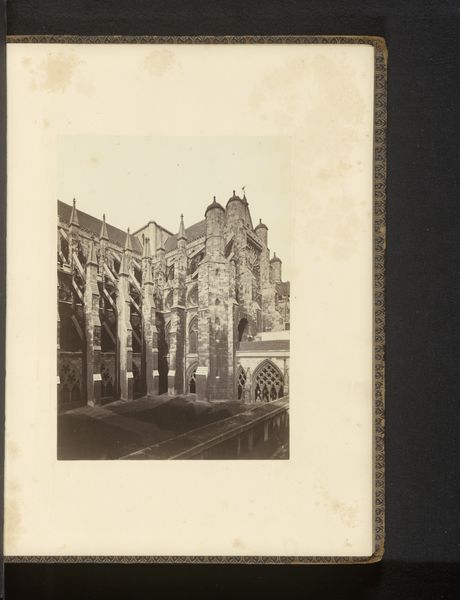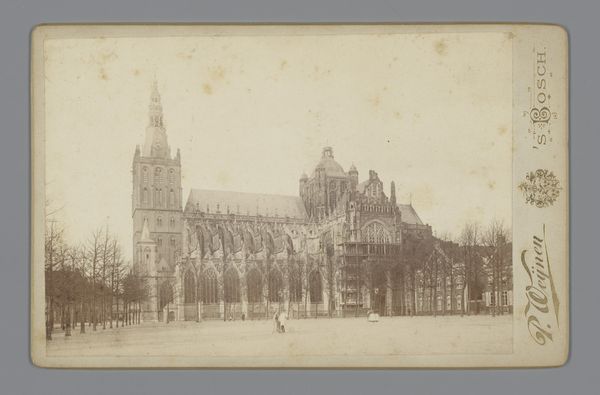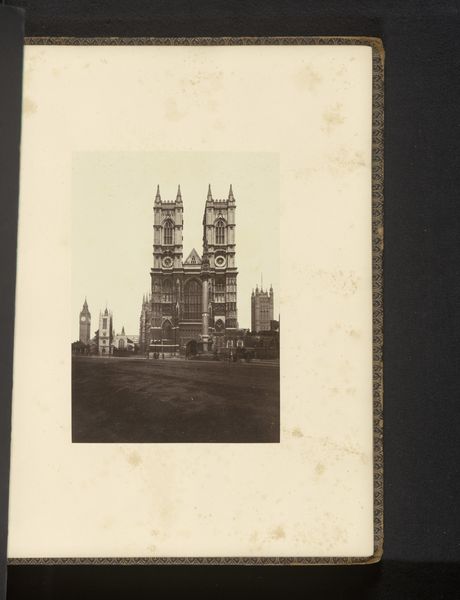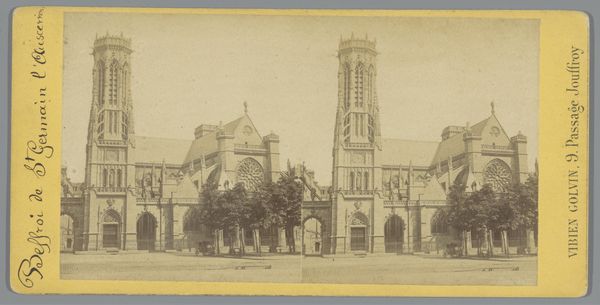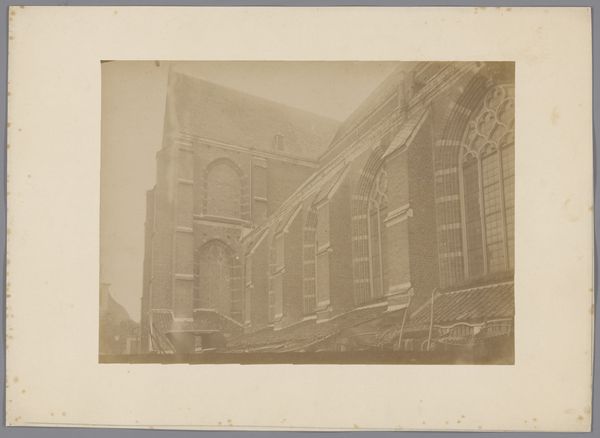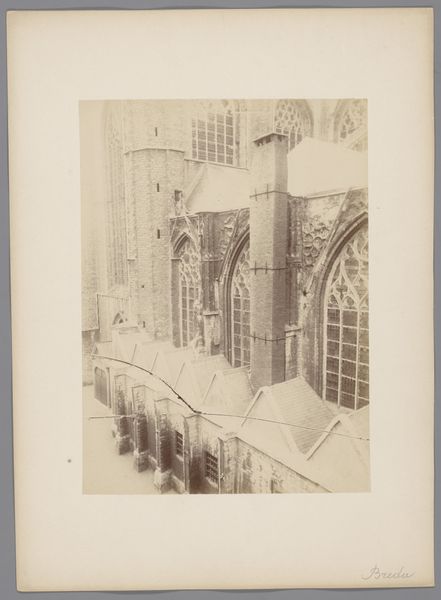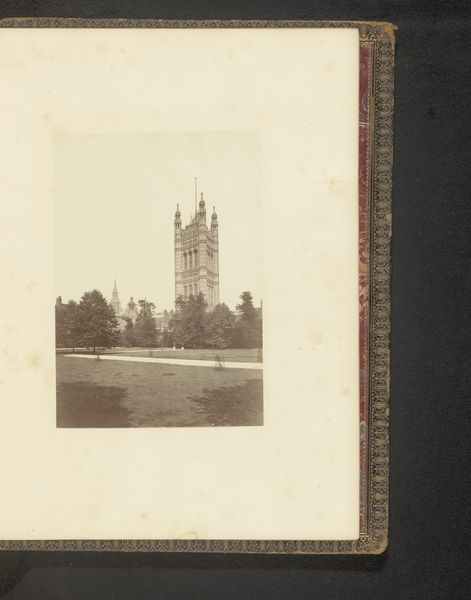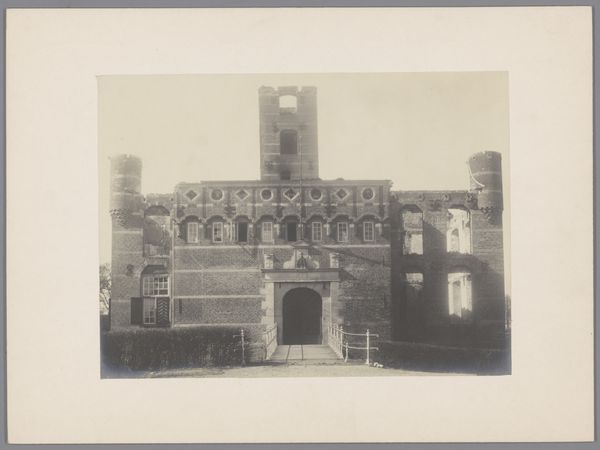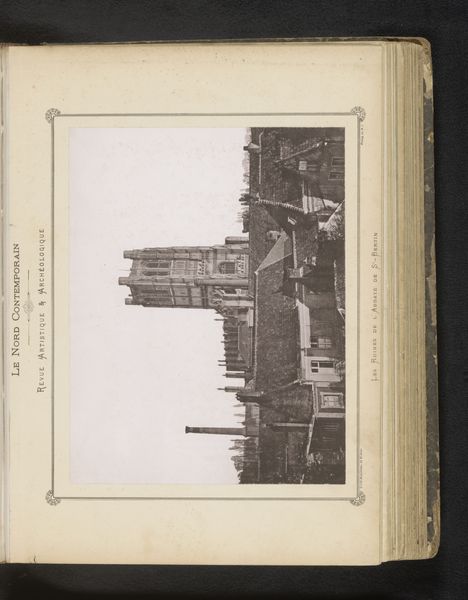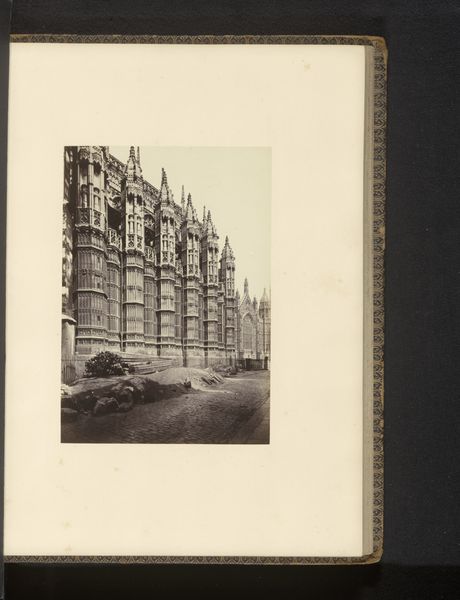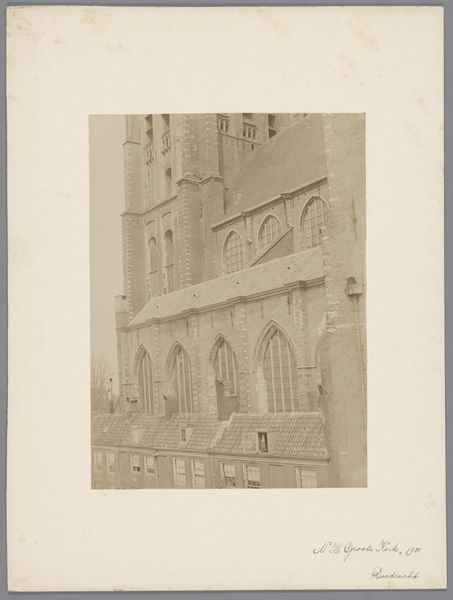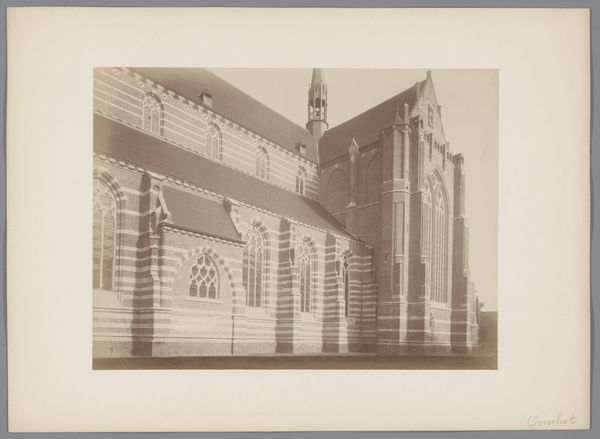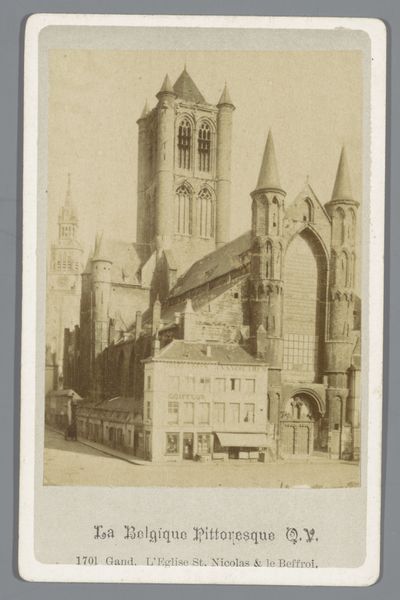
print, photography, gelatin-silver-print, architecture
# print
#
landscape
#
photography
#
gelatin-silver-print
#
architecture
Dimensions: height 194 mm, width 139 mm
Copyright: Rijks Museum: Open Domain
Curator: It’s really evocative, this shot—all gray stone against a muted sky, the spires of Westminster Abbey stabbing upwards like defiant prayers. Editor: Indeed. Here we have “Westminster Abbey, de zuidelijke kant, kijkend naar het westen,” or Westminster Abbey, the south side, looking west—captured in a gelatin-silver print sometime before 1869. What we immediately observe is the sheer architectural mass, starkly revealed through tonal gradations. Curator: Exactly! It's both solid and ethereal. Look at the strong vertical lines of the buttresses marching along the side – feels like some kind of solemn procession, doesn't it? But then the light softens everything, almost blurring the edges. Editor: Observe how Harrington plays with perspective, employing a relatively high vantage point to compress the architectural elements. The result? A flattening of the facade which enhances the sense of depth achieved through contrasts in value, reinforcing the picture plane as a structural component of the image. Curator: Maybe, maybe. I mostly get the impression of how long this building has been standing—all those centuries pressing down on it, yet still striving upwards. Do you know if Harrington did a lot of architectural studies like this? Editor: Harrington's aesthetic sensibility prioritizes clear and objective representation. There is limited available background, however, given the precise geometric configurations present, the picture functions as an art object divorced from content beyond its formal properties. Curator: Formal properties, schmoral properties! Okay, okay, I can see how the geometry works in the photo's favour, the repetition of shapes creates a rhythm that moves your eye upward along the frame. I still prefer to daydream that those stones were set in place by someone who never believed their hard work could be represented or understood this vividly, this far into the future. Editor: A valid affective consideration, though external to its internal cohesion as an independent work of art, however, one point for its lasting legacy. Curator: Then we can surely both agree: a powerful image in every possible respect. Editor: Undeniably so.
Comments
No comments
Be the first to comment and join the conversation on the ultimate creative platform.
